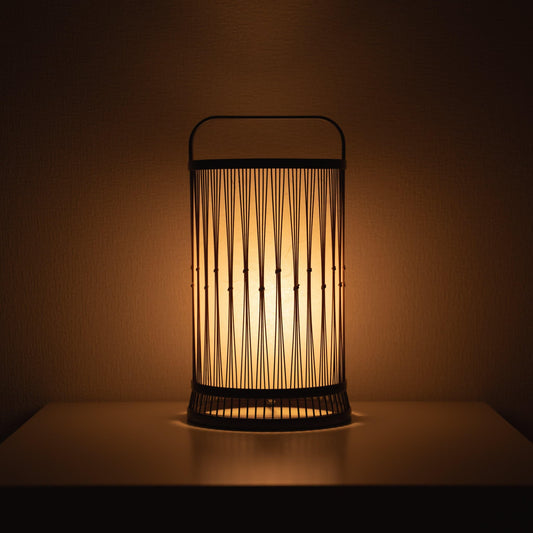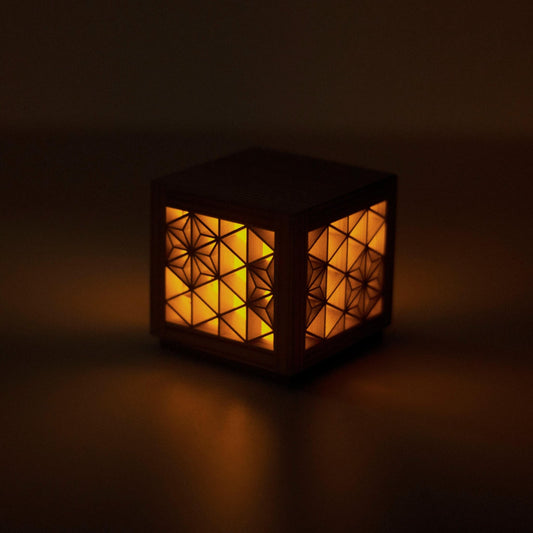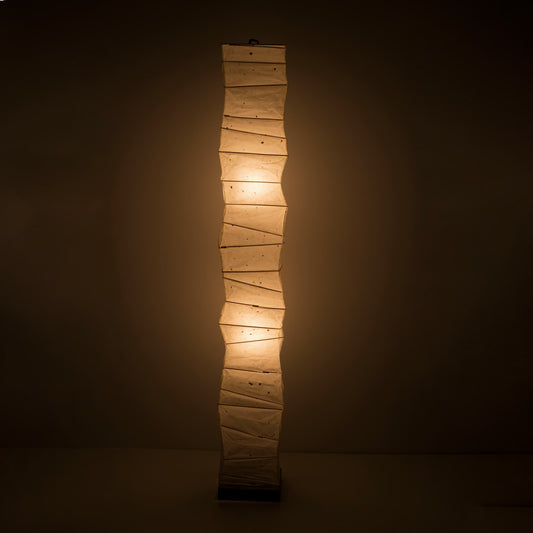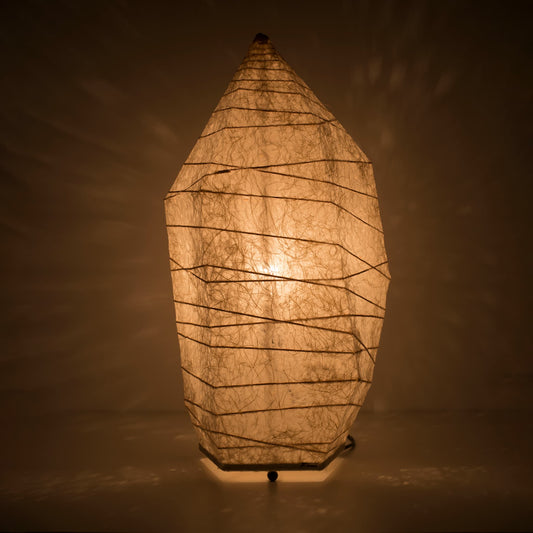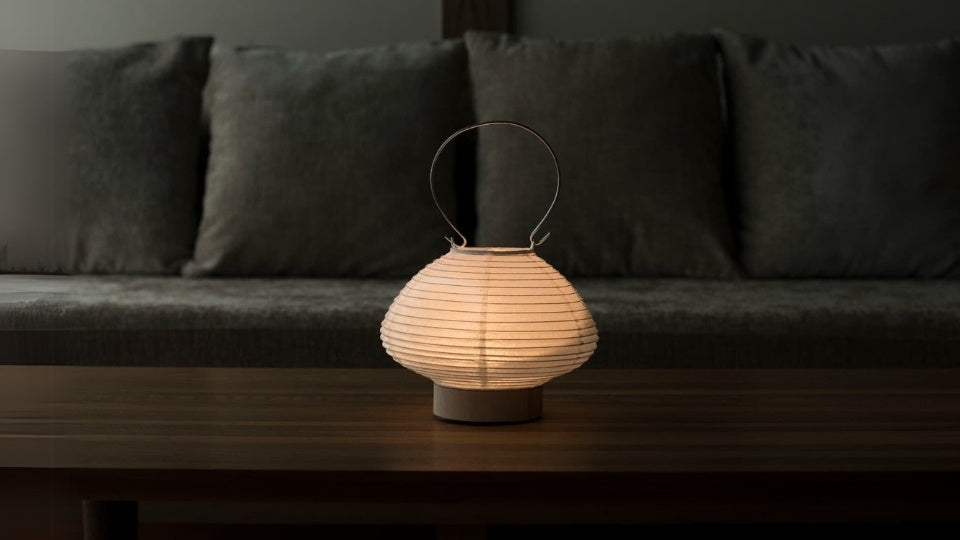
Japanese Lanterns: A Deep Dive into Japanese Paper Lamps
Share
Japanese lanterns are exquisite lighting fixtures deeply embedded in the rich cultural tapestry of Japan. Far more than simple light sources, they are symbols of history, artistry, and a unique aesthetic. Characterized by their soft, diffused glow, often achieved through materials like washi paper and bamboo, these Japanese lamps illuminate spaces with a serene beauty that has captivated people for centuries. From the iconic chochin swaying gently at festivals to the stately toro gracing temple grounds, Japanese lanterns offer a window into a timeless tradition, making them an unparalleled choice for those seeking an authentic paper lamp.
Table of contents
History and Culture of Japanese Lanterns

The history of Japanese lighting is a fascinating journey, evolving significantly over more than a millennium. Its origins can be traced back approximately 1300 years to the Nara period (710-794 AD), when oil lamps were introduced from China alongside Buddhism. These early "Todai" (oil lamps), consisting of a "Hizara" (oil dish) and a "Toshin" (wick), marked the initial foray into artificial illumination. Simultaneously, "Ishi-Toro" (stone lanterns) were introduced for Buddhist ceremonies, initially exclusive to monks and high-ranking individuals, setting the stage for the diverse array of Japanese lamps we see today.
From the Heian period (794-1185 AD) to the Azuchi-Momoyama period (1568-1600 AD), plant-based oils and the prototypes of "Andon" (paper-covered lamps) and "Chochin" (paper lanterns) arrived from China. During this era, stone lanterns expanded their role, illuminating city guard posts. However, fuel remained a valuable commodity, limiting widespread use among ordinary citizens.
The Edo period (1603-1868 AD) truly saw the blossoming of Japanese lighting culture. This peaceful 260-year span brought forth a diverse array of lighting fixtures, enriching daily life. Stone lanterns became common streetlights, and new forms like andon and chochin adorned shop fronts. The increased accessibility of oil and candles, though still precious, fueled this expansion. The "andon" evolved from the exposed Todai, with a "Hibakuro" (paper shade) for wind protection, typically made of Japanese paper. The emergence of plant-based candle materials also led to the creation of dedicated candle lighting, giving rise to the "chochin," a quintessential paper lamp.
During this period of burgeoning travel, toro were installed as guideposts, chochin served as portable lights, and andon marked lodgings and restaurants. These traditional Japanese lanterns illuminated Japan until the advent of gas lamps in the Meiji era (1868-1912 AD) and the subsequent widespread adoption of electric lighting.
Understanding Types of Japanese Lanterns
Japanese lanterns encompass a variety of forms, each with unique characteristics and historical significance:
Chochin (Japanese Paper Lantern)
Created around 400 years ago during the Edo period, chochin are iconic for their foldable structure and use of a candle as an internal light source, shining through a Japanese paper "Hibakuro" (shade). The characters "提灯" (chochin) mean "to carry in the hand" and "light," reflecting their original portable function. Their ability to fold, a feature not present in original Chinese lanterns, made them immensely popular during the Edo period's travel boom. Today, various shapes exist for different purposes, adorning shrines, restaurants, and homes. Notable examples include the giant red paper lamp of Kaminarimon Gate at Senso-ji Temple and the "Akari" lighting sculptures by artist Isamu Noguchi, inspired by Gifu chochin. Gifu chochin, known for their soft, warm light, are traditional crafts made with over 1300 years of history, using Mino Japanese paper and high-quality bamboo.
Structure of Chochin: Chochin are primarily composed of three parts:
- Hibakuro (shade): Made of Japanese paper, acting as a windbreak. Designs vary widely, from crests and letters to intricate paintings.
Gawa (rings): The top and bottom rings, used for extending and contracting foldable chochin.
Hone (ribs): The frames that give the chochin its shape, traditionally made of "Takehigo" (thin bamboo strips). Rib winding methods include the Gifu chochin method (individual ribs around a ring) and the "Ichijo Rasen-shiki" method (single long rib wound spirally) for Yame chochin.
Toro (Japanese Stone Lantern)

With the oldest history among Japanese lighting fixtures, toro were introduced from China for Buddhist architecture. In Buddhism, light was believed to ward off evil. While initially for religious ceremonies, they became widespread streetlights and guideposts during the Edo period. The character "籠" (toro) means "basket," signifying a basket that holds light. Toro encompass three material types: stone, paper, and bamboo. Ishi-toro (stone lanterns) are the most common and oldest, seen in temples, shrines, and Japanese gardens. Kami-toro (paper lanterns) are used in events like Toro Nagashi (lantern floating ceremony), and Take-toro (bamboo lanterns) are crafted from bamboo, offering another unique form of Japanese lamp.
Structure of Ishi-Toro: Stone lanterns have a distinct six-part structure:
Hoju: The onion-shaped top stone.
Kasa: The roof of the firebox, with various polygonal or circular shapes.
Hibakuro: The part where the light is lit, sometimes with Japanese paper for wind protection.
Uke: The base supporting the firebox, often with a contrasting shape.
Hashira: The longest pillar, which can be omitted in some types.
Jirin: The bottom base, polygonal or circular, sometimes with multiple leg-shaped forms.
Paper and bamboo lanterns typically have simpler, less fixed structures, making them versatile Japanese lamps.
Andon (Paper-Covered Lamp)
Developed during the Edo period, the andon is a lighting fixture that uses oil or candles as fuel. It evolved from the exposed "Todai" by enclosing the flame with a wooden frame and Japanese paper to protect it from wind. While "行" (andon) means "to move," its portable role was eventually taken over by chochin, leading andon to become primarily stationary lighting, akin to modern floor or table lamps. Various types were created, including the common indoor "Oki-andon" (placed andon), "Kake-andon" (hanging andon) used as shop signboards, and the "Ariake-andon," a small bedside lamp with an adjustable window for light control. Being made of Japanese paper and wood, andon were mainly indoor lighting. Today, they are largely found in temples and traditional Japanese houses, especially in Kyoto, serving as an elegant Japanese lamp.
Structure of Andon:
- The basic andon structure is simple: a "Hizara" (oil dish) for fuel, enclosed by a wooden frame and Japanese paper.
- Hanging types like "Kake-andon" have an oil dish on a base attached to a pillar or wall, with a protective frame.
- The "Ariake-andon" showcases Edo period ingenuity, featuring a wooden cover with a window to adjust light and a removable cover that also serves as a base to adjust lamp height.
Bonbori (Snow Lantern)
Often seen during Hinamatsuri (Doll's Festival), bonbori are decorative lights wrapped in paper or cloth, producing a gentle, diffused glow. Their name is believed to derive from words like "honnori" (faintly) or "bonyari" (dimly), evoking the image of light leaking from a snow hut. Bonbori are traditionally placed on either side of the O-Hina-sama (male and female dolls), illuminating the ceremonial display, embodying a charming Japanese lamp form.
How to Enjoy Japanese Lanterns
The enduring appeal of Japanese lanterns lies in their ability to blend traditional craftsmanship with timeless beauty, making them a captivating addition to modern living spaces. Their versatility as a Japanese lamp is unmatched.
Embrace the Japandi Style
The "Japandi style," a popular interior design trend, fuses the Japanese aesthetic of "Wabi-Sabi" (finding beauty in imperfection) with the Scandinavian concept of "Hygge" (coziness and well-being). Japanese lanterns, with their soft, warm light and natural materials, are a perfect fit for this style, creating serene and inviting environments. The Akari series by Isamu Noguchi, inspired by Gifu chochin, is a prime example of how traditional techniques can be reinterpreted for contemporary interiors, offering a modern take on the classic paper lamp.
Create a Traditional Ambiance
Even a small stone lantern can instantly evoke the tranquility of a Japanese garden in your home. These lanterns, still actively used in temples, preserve the traditional techniques of stonemasons in areas like Okazaki City and Kyoto.
Integrate into Modern Interiors
Andon can be placed in hallways or bedrooms for soft, atmospheric lighting, while chochin can serve as a captivating focal point in living rooms or dining areas. These traditional elements seamlessly integrate with contemporary design, adding a unique cultural dimension and a sense of calm. The simplicity and high-quality materials of Japanese lighting ensure they blend naturally into diverse modern lifestyles, providing a beautiful and functional paper lamp solution.
Bring the Serenity of Japanese Lanterns Home
Japanese lanterns are more than just functional objects; they are living testaments to Japan's rich cultural heritage, showcasing exquisite craftsmanship and a profound appreciation for beauty and light. Their ability to evoke tranquility and elegance continues to enchant and inspire, solidifying their place as a cherished Japanese lamp.
If you are drawn to the allure of these timeless pieces, consider exploring authentic Japanese lanterns online. Stores like Ishimo, a Kyoto stonemasonry shop with a 290-year history, offer traditional stone lanterns for your garden or outdoor space. For those seeking Japanese paper lighting that inherits the design of chochin and andon, Millennium Gallery Japan provides a curated selection of craftsman-made pieces, including floor lamps with traditional Kumiko patterns that effortlessly integrate into modern interiors, offering a truly unique paper lamp.
By incorporating these beautiful and functional Japanese lamps into your home, you can experience the serene glow and cultural richness that Japanese lighting has to offer.













